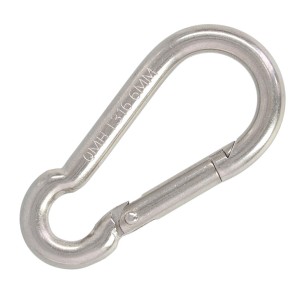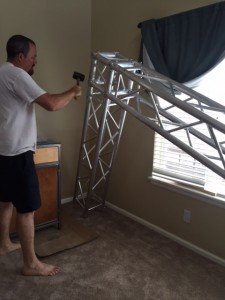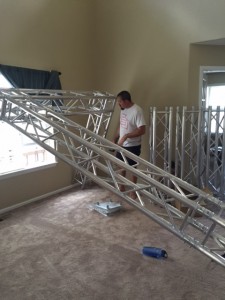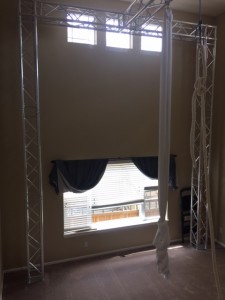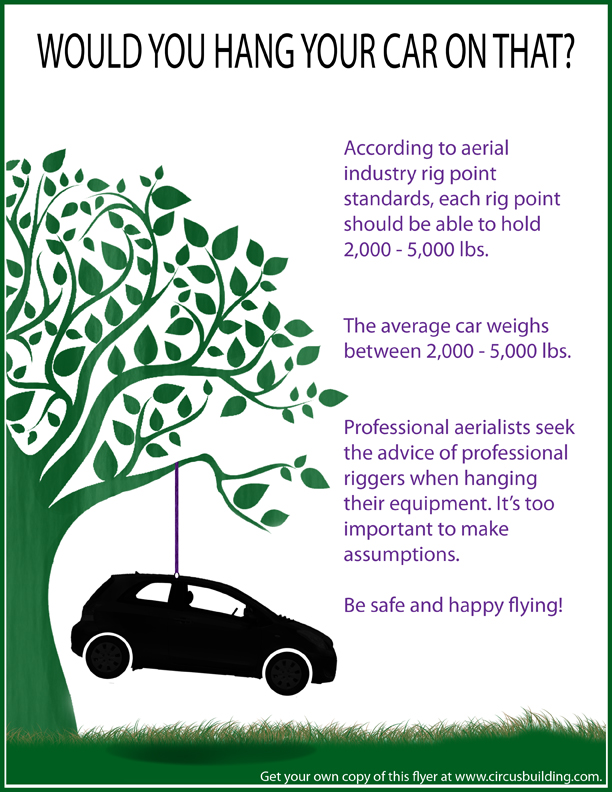Do you have someone in your life that does circus? Does their hobby brink on obsession? If you do, then this article will help you with your holiday shopping. The article is separated into types of circus folks to help guide the buying, but honestly many aerialists fall into multiple (or all) categories. Links have been included, but Born to Fly is receiving no proceeds for including them from the vendors of the items. Many were picked intentionally, but many are just quick looks via Amazon. We’re just trying to make your holiday shopping SIMPLE as PIE! Enjoy!
The Aerial Addict
Let us begin with a more general group and move into some more specific types of practitioners. The Aerial Addict can be new to the circus, or a long-time enthusiast, but they have a burning passion for aerial and all things circus. When regular muggle things are turned into circus things, their heart soar and squeals may occur. Below is a fun list of things that you can give to help this soul rep their circus love loud and proud:
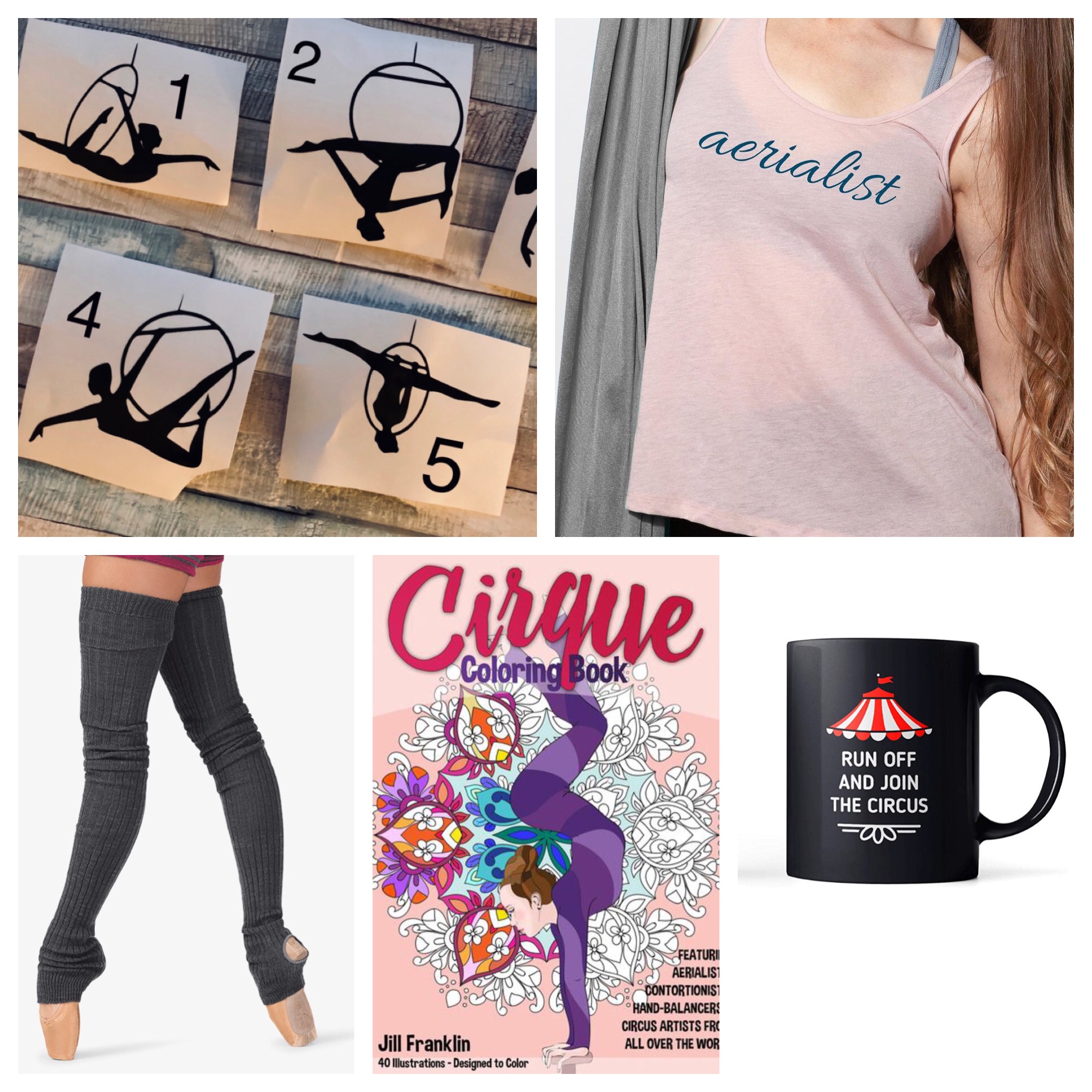
• Circus tanks
• Leggings/leg warmers
• Socks
• Stickers/Decals
• Water bottle/coffee mugs
• iTunes/music gift card
• Training notebook
• Circus coloring books
These gifts are a great way to infuse circus into the everyday aspects of life. I know when I see these little things around I have found my people. These items are available in the rabbit hole that is Etsy but also fun things to creatively customize on your own for a more personal gift.
The Aches and Pains Athlete
This is our hardcore aerial addict! They are always striving to accomplish difficult things and working hard, resulting in all the muscle soreness that can be achieved by an individual. Along with aches, other pains often manifest from apparatuses “kisses” in the form of bruises, burns, or partial calluses. This person is dedicated to their work, but less so in their rest. The best gifts for this type of aerialist provide ouch assistance by helping them recover from their constant training. Consider the following:
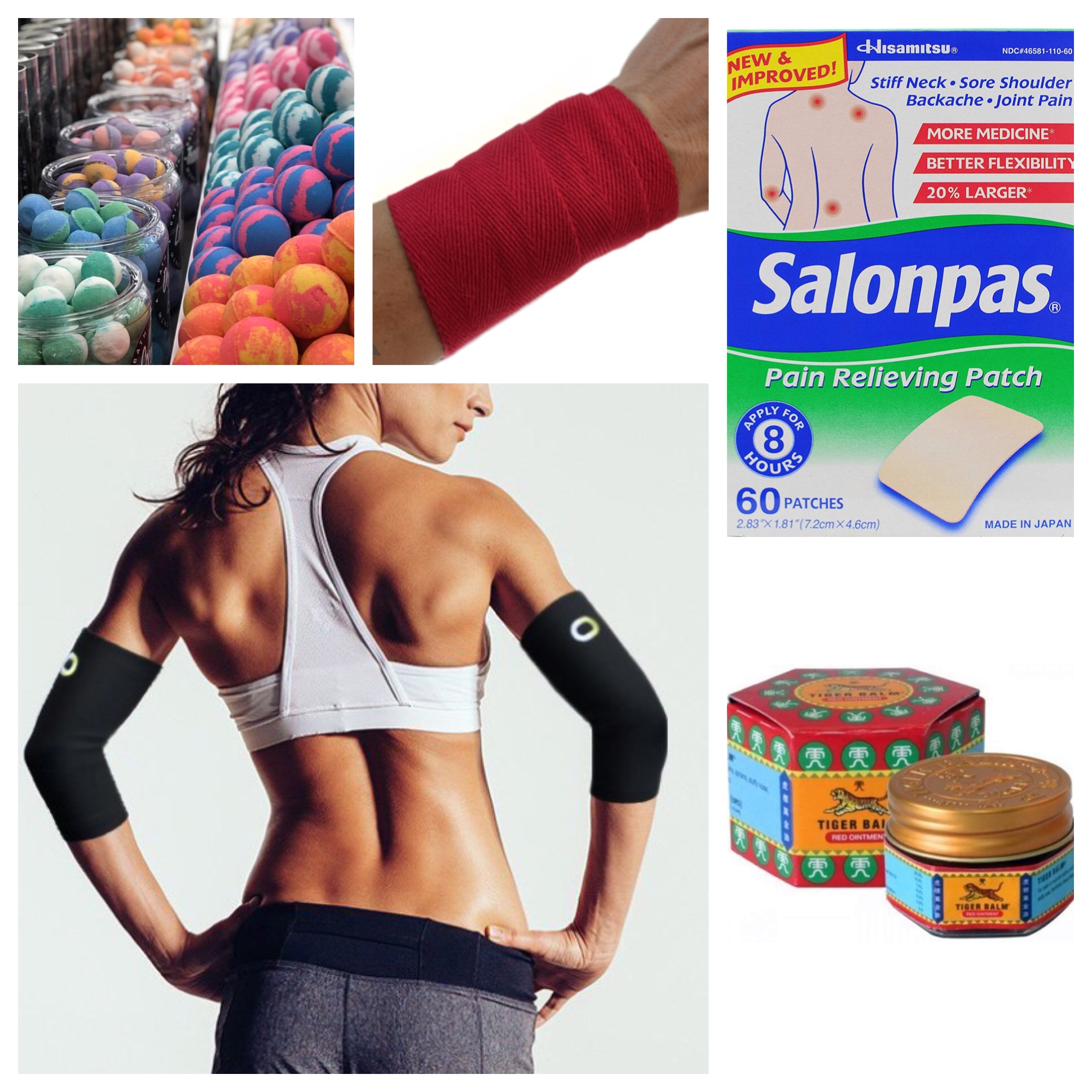
o Tiger Balm
o Salonpas patches
o Tegaderm
o Bath bombs/Epsom salts
o Elbow sleeves
o Ankle booties
o Wrist wraps
Tiger balm or any type of muscle cream is great for larger areas of tenderness if an individual can’t make it home to soak their weary body in a hot bath with the relief of a bath bomb or Epsom salts for recovery. I, personally, love Salonpas patches. These are a great help for those “trouble spots” that haunt many aerialists. These give a constant tingle to a small area for a longer period. I have a spot on my upper trapezius that gets angry some days, but if I throw a patch on there, it relaxes up and doesn’t inhibit my training. Tegaderm is useful for more aggressive abrasions and scrapes that occur. These are far more helpful than Band-Aids because they stay on during high-intensity fitness activities. Ankle booties, elbow sleeves, and wrist wraps are all gear to wear during training for those painful skills these intense athletes strive for: ankle hangs, elbow circles, reverse flag, etc.
The Tool Gathering Guru
This aerialist has all the training accessories a person could ever need! Their apparatus alone will not suffice and various things get purchased to assist in developing that hard to target muscle for strengthening or flexibility. For these individuals, consider the following:

• Peanut/Lacrosse balls
• Resistance bands/loops
• Yoga blocks
• Superbands
• Back Warmer
• Finger extensor strengtheners (rubber bands, live strong bracelets, etc)
• Grip strengtheners
• Rosin spray/powder/grip aids
While many of these can be purchased at a general fitness store, some of these are more obscure, like the peanut. If the aerialist your love is primarily a flyer, they might need to balance out their grip with finger extensor condition. If they are a handstands fanatic or hand-to-hand acro enthusiast, consider the reverse and give grip strengtheners. Many aerialists can be picky about their grip aids. Chalk, powder rosin, rosin spray, dry hands, dew point, etc. Invest here with a little caution, but if you know their grip aid of choice, then it’s an easy investment to include in a stocking and will get used happily.
The Budding Performer
This individual has found their expressive stage through the circus life! Signing up for every studio showcase, auditioning for every aerial slot available, this soul is meant to run away and join the circus. Taking classes is a mere tip of the iceberg for their expressive heart. Performing comes with its own list of special things and here is a good start for gifting to your circus ham:

• False eyelashes
• Face jewels
• Rhinestones
• E6000 Fabrifuse (non-toxic)
• Nude Fishnets
• Makeup remover
• Facial masks
Things that make them dazzle are key! I love using false lashes when I perform, but I’m terrible with putting them on and mess up the glue EVERY time, so I personally use magnetic falsies. Full DISCLOSURE: I am a brand ambassador for the ones linked, but am not being paid to recommend them. I will, however, share my discount code for anyone that wants to try them (MCKELL10). Rhinestones are also their own animal. Swarovski and Preciosa are the best, but glass DMC is a more budget-friendly option while maintaining decent quality. Also, since performers often have fabulous makeup on all the time, a great skin care regimen can be crucial, along with items that help maintain their beautiful faces.
The Equipment Accumulator
This individual might also be referred to as a Circus Investor. Attending classes is not enough, they want their own apparatus, they probably own a portable aerial rig, they scope out ceiling beams and carabiners with a lusty hunger in their eyes. For these folks, I recommend giving these wonderful gifts:
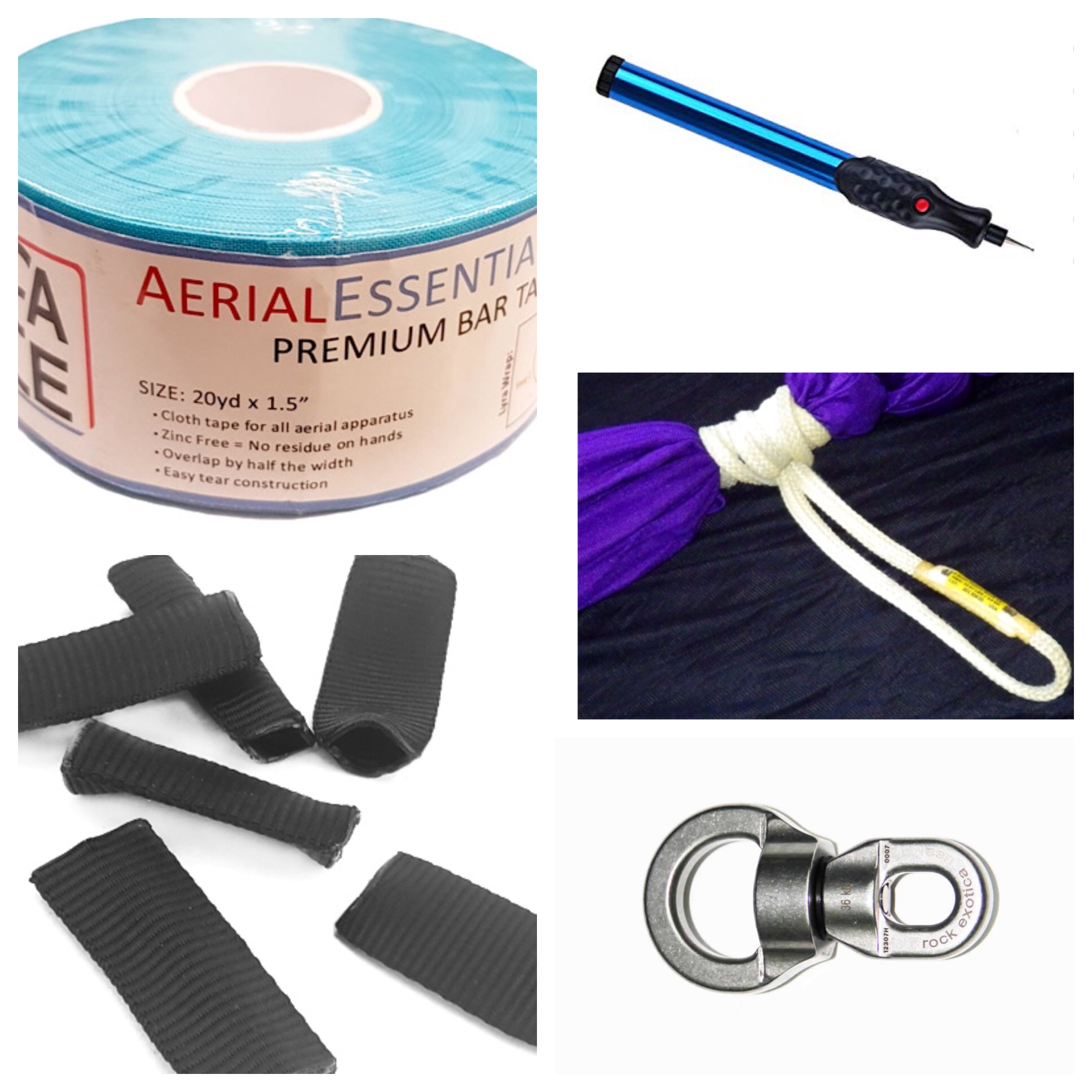
• Athletic tape
• Hollow blocks
• Carabiners/shackles
• Carabiner keepers
• Swivels
• Etching tool
If the circus love of your life is an equipment accumulator, beware, they are the most expensive circus artists to support. While many of these items might *fit* in a stocking, they can range significantly in price. When my husband gave me a stainless-steel Rock Exotica swivel, I swooned! Partially because it’s beautiful and spins forever, but also because it was a $200 investment, I hadn’t let myself make for ages. I do highly recommend giving the gift of an etching tool for any equipment hoarding circus dragons that love their shiny toys. Etching tools are inexpensive, but help promote long-term equipment marking and inventory management. (Is it obvious that this in my clan?)
In a very short period, this list has become very long. Personally, I belong to most of the groups listed above and have some experience with most of the things listed. Others (like rhinestones) I took the feedback from other glorious friends I have that use them. Hopefully, it includes a few things that will be helpful when picking up goodies for your passionate aerial friends. Do you have other favorites, not on this list? Do you have a specific brand you swear by that we missed? Comment and tell us what they are!

